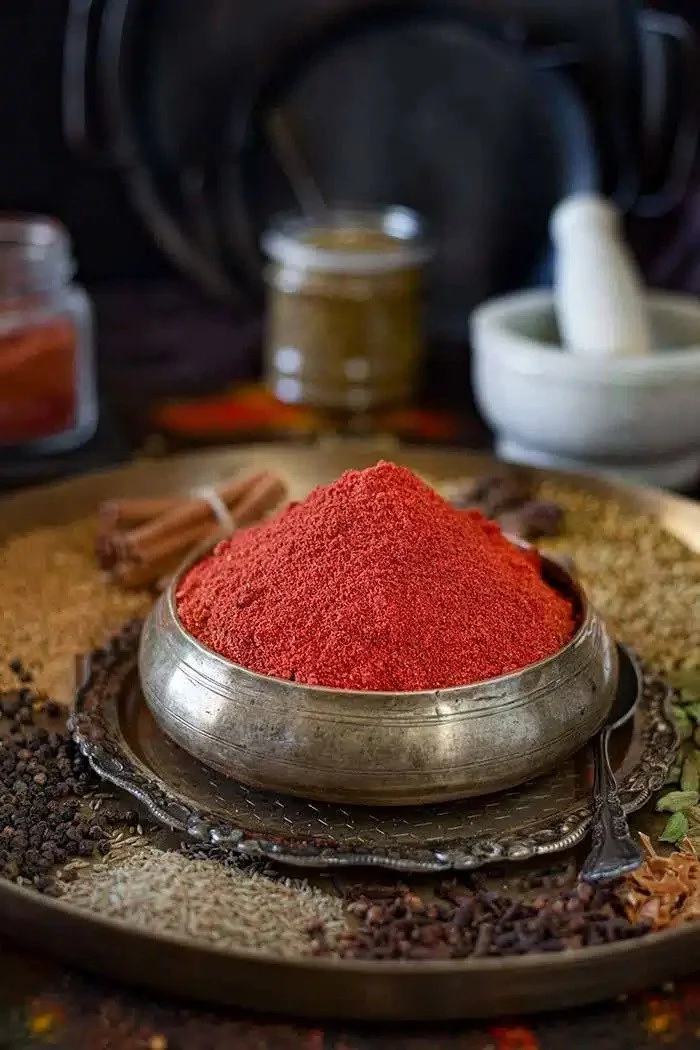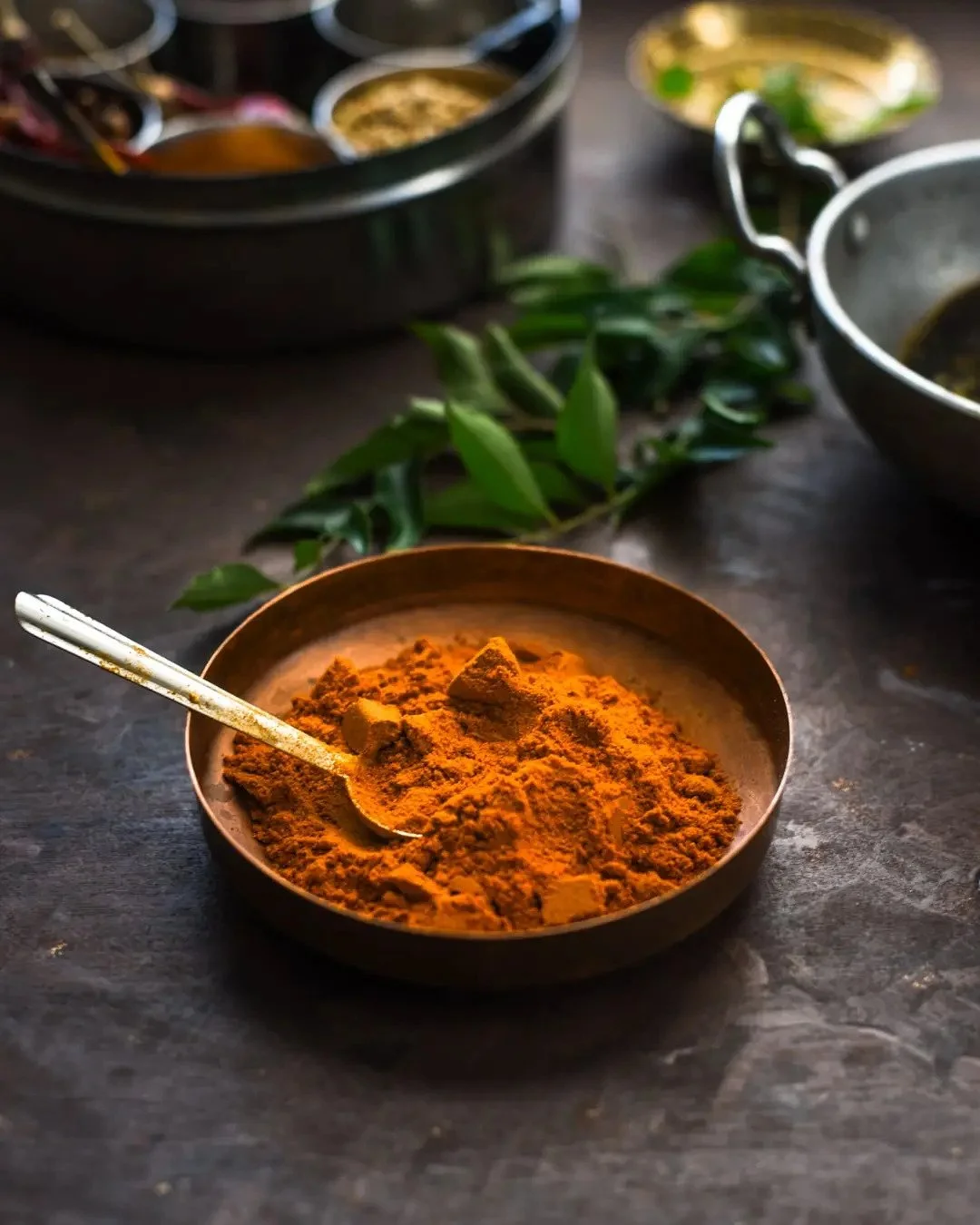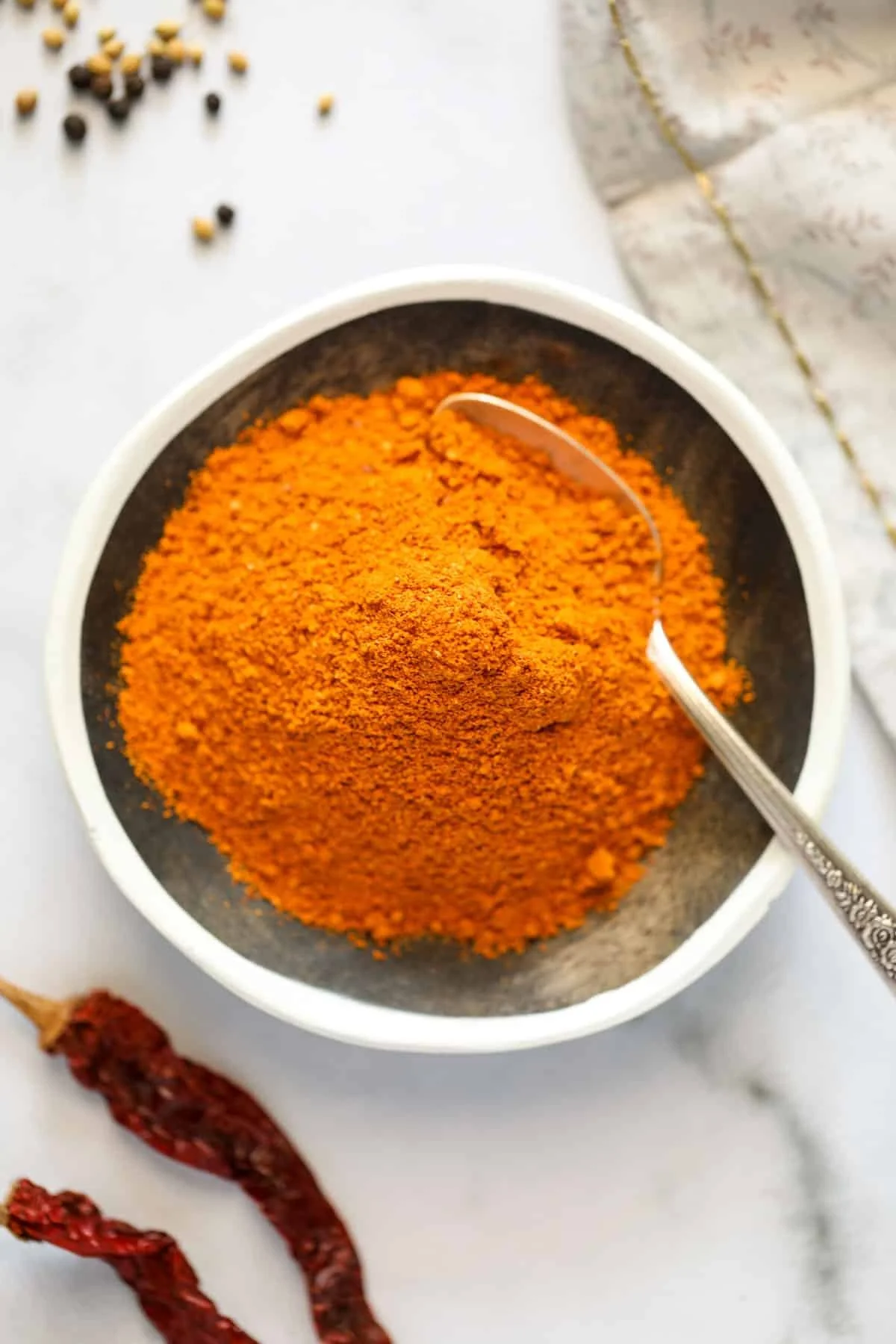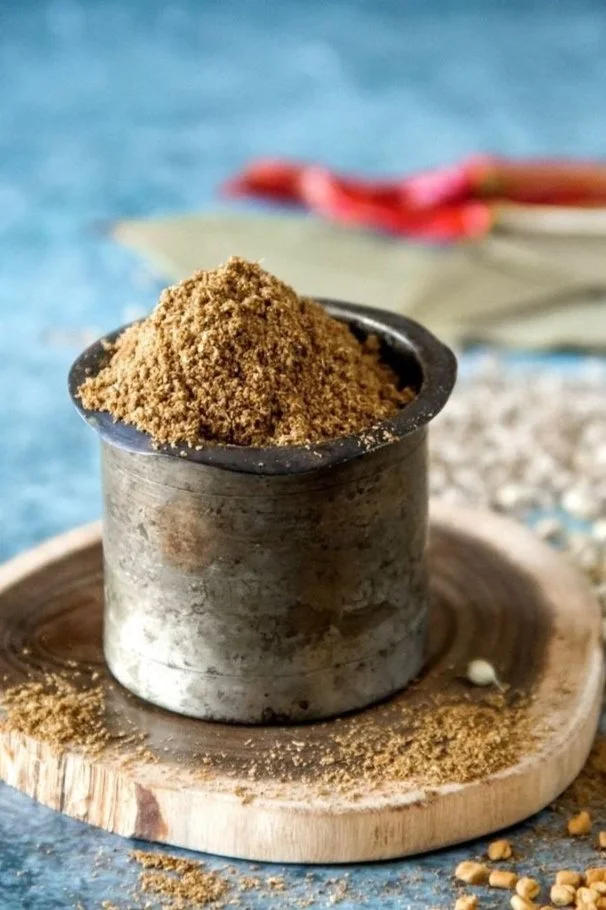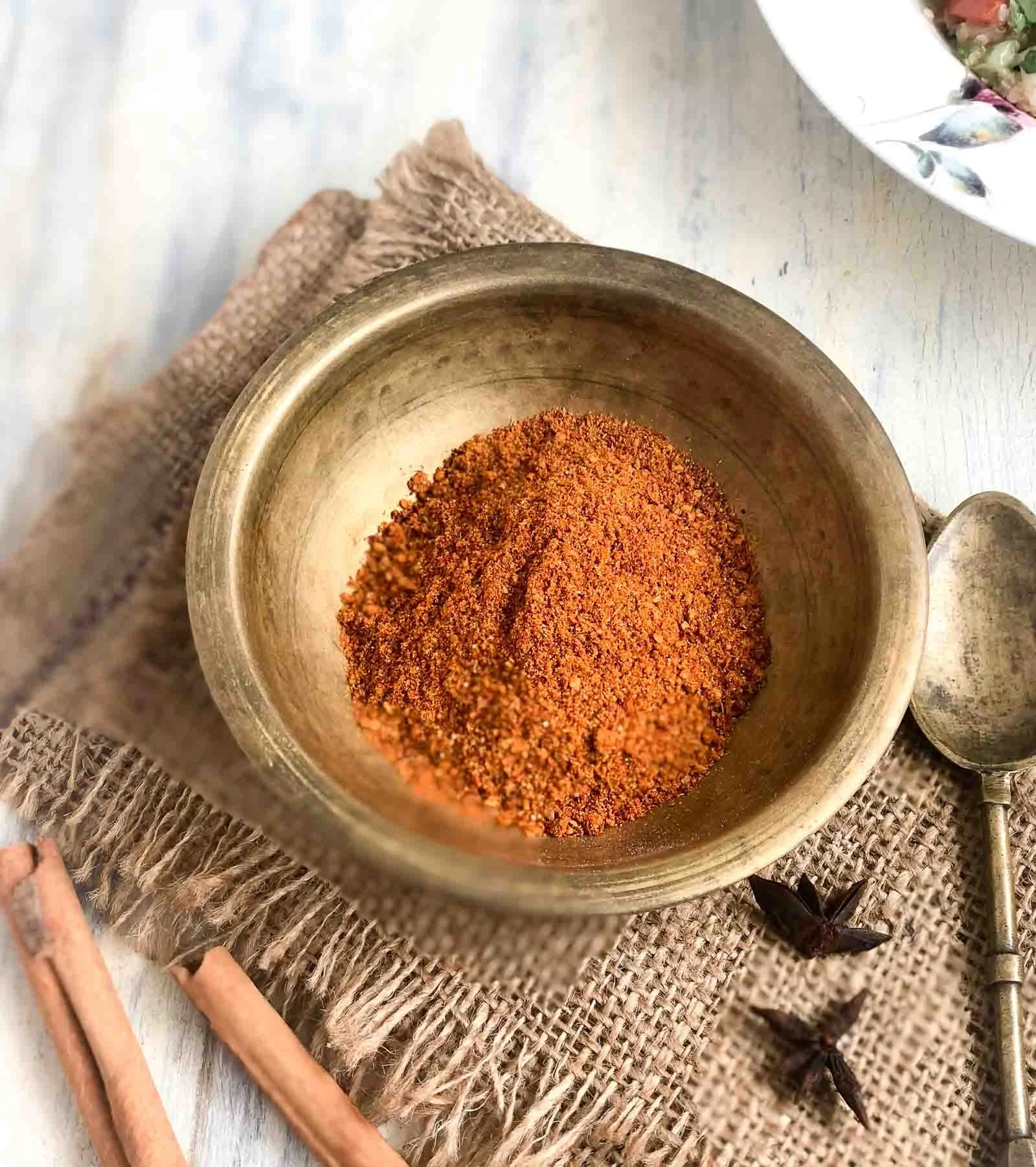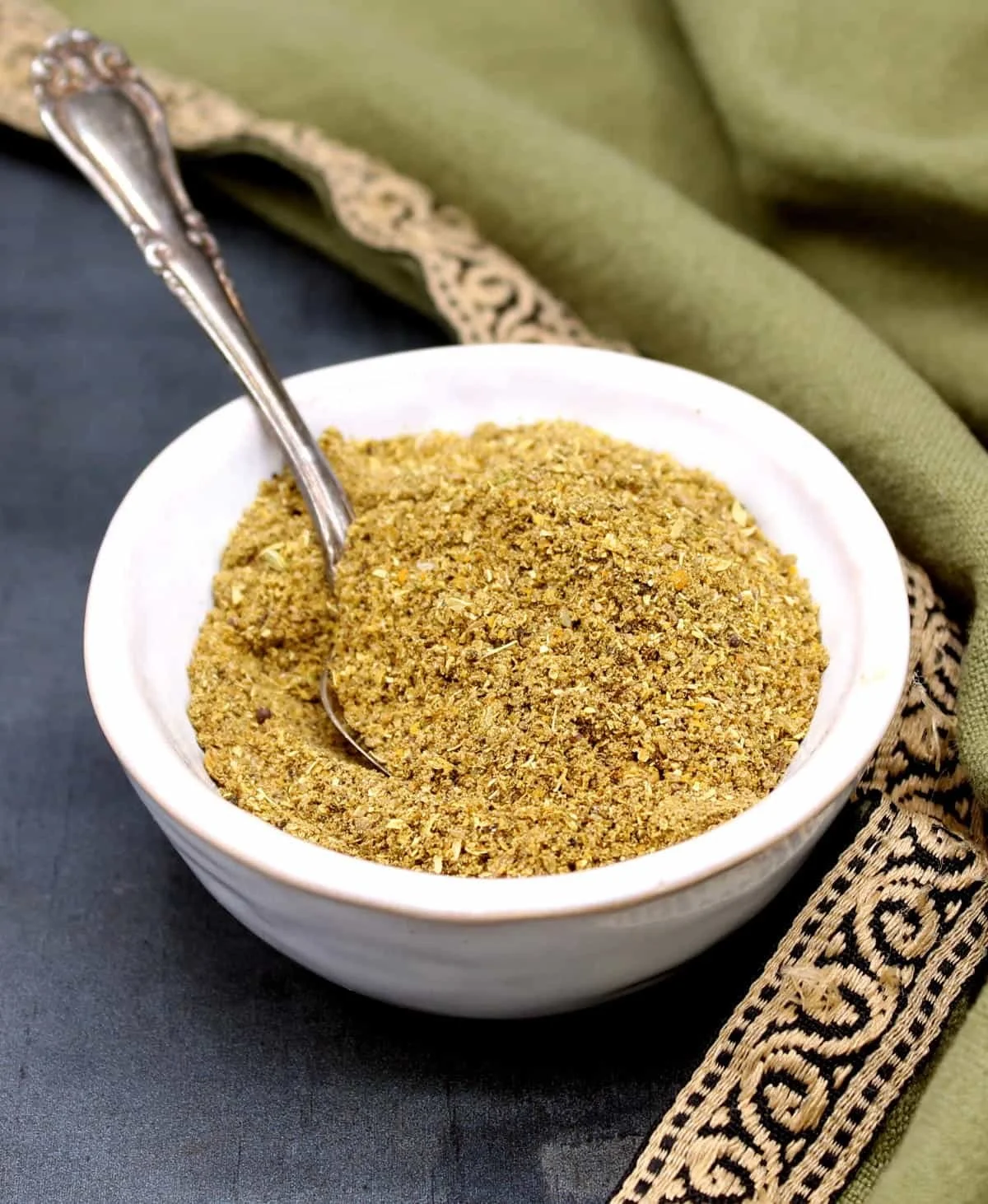A Guide to All the Masalas
“Masala” is a South Asian term for spice blend. Also, best believe there are many different types of masalas out there other than Garam Masala. As such, I thought it would be nice to explore a couple other popular masalas so that you can (& I can), explore a plethora of other South Asian dishes. I should also point out, often times I see people refer to one spice as masala rather than a blend of spices. Not that it is incorrect as I believe a literal translation of masala is ‘spice’ in Hindi and possibly other languages. But since every spice has a name, masala is popularly known as a spice blend of sorts. Not only do the spices vary in every masala recipe but also the consistency of it. It can be a dry blend of spices or a wet paste of spices. Some masalas have a long shelf life, whereas others may have a short shelf life. Every masala blend is purposeful and emblematic to the region it originated from. I am going to try my best to make a comprehensive list rather than a completed one to show how varying masalas can get so while this list won’t include all, just know that there are plenty more masalas out there to explore. Just go to your nearest South Asian supermarket and check the spices isle, you’ll see an ocean of masalas!
Also if you click on the pictures it takes you to corresponding blog recipes of the different masalas. I have not tried each and every one but feel free to use those recipes as a guiding point (or not)!
Garam Masala
This spice is the AP spice mix. If you have space in your pantry for only one masala, this is the mix you would store. It can be used to make daal, a simple chicken dish, chickpeas…literally anything. Actually matter-of-fact, you can use any masala in any type of way be it for pasta (gasp) or a roast….I don’t believe in a hard and steadfast rule. But this particular masala is one you would generally see used often in South Asia and the South Asian diaspora. Garam masala translates to “warming spice mix”. Apparently based on Ayurveda, this combination of warming spices is supposed to increase metabolism and help people deal with the cold climate in Northern India. However I have not come across a reliable source to verify that. According to Julie Sahni’s book, Classic Indian Cooking, she mentions how there are actually two types of garam masala. One is the traditional garam masala which is a simple blend of cardamom, cinnamon, cloves and black pepper, occasionally nutmeg too. This 4-5 spice blend is known as Mughal garam masala. Over the years coriander and cumin were introduced to the mix as well and this version is the current day garam masala or Punjabi garam masala. However, there are slight variations of this masala all across the regions of South Asia.
Common Ingredients:
Coriander, cumin, cinnamon, cardamom, cloves, black pepper, nutmeg
Chaat Masala
Chaat in it of itself is a popular street food. Comfort food for many, maybe not me (gasp). I do love pani puri…whoever invented those plastic pani puri fountains for sure knows how to have a good time. This masala is used to assemble the ingredients to a chaat. Tangy, sour and salty are usually the flavors to this masala. In fact this is a great masala to add over fruits like watermelon! Honestly ever since I saw the watermelon chaat recipe on NYT Cooking I almost always NEED chaat masala mixed with watermelon and some cilantro *chefs kiss*
Common Ingredients:
Dry mango powder, black salt, dried pomegranate seeds, cumin, asafetida, ginger, coriander, black pepper, chili powder
Tandoori Masala
When people think of tandoori they think of the iconic tandoori chicken. A red, fragrant and juicy dish. It is honestly a festivity type of meal; you’ll see a big hot plate topped with tandoori meats, kebobs and onions at most weddings or special occasions. “Tandoori” is actually a style of cooking where food gets cooked inside a clay oven that is called tandoor. A tandoor is designed for really high temperature cooking. If you have ever seen how naan gets made, then you probably know how a tandoor looks like. In fact I was sure South Asians made it in America when I found out Jimmy Kimmel has his own tandoor oven. I swear there was even a video but I guess I am imagining things because I can’t find the video anymore. This masala is all about the red color which is attributed to Kashmiri red chilies. So it is not generally spicy but rather fragrant. Apparently, this masala blend and tandoori chicken was popularized by Kundan Lala Gujral pre partition. He went on open up Moti Mahal in Delhi popularizing butter chicken and dal makhani. His dishes were lauded by JFK, Nixon and Nikita Khrushchev. Even Jackie Kennedy was seen eating tandoori chicken on a flight from Rome to Bombay. Anyways, tandoori masala is not restricted for use in a tandoor. You can still prepare any meats or paneer with this masala and bake it in the oven to get that nice red char.
Common Ingredients:
Red chilies, cinnamon, mace, black cardamom, green cardamom, cloves, cumin, nutmeg, fenugreek, coriander
Chai Masala
People are very passionate when it comes to their chai and chai masala. I love my mom’s chai although I haven’t had it in a very long time due to milk sensitivities. I seriously had to weight out the pros and cons to either having cystic acne or indulging in masala chai. But the best masala chai I have had recently has been in Mumbai…at a hair salon. The owner was kind enough to order a small cup of adrak wali chai, or ginger chai, from the corner chaiwalla and wow it was perfect. I also had an amazing cup of saffron masala chai at Brooke Bond Taj Mahal Tea house in Bandra, Mumbai. Kudos to my cousin for the excellent recommendation. I have a whole blog post on chai and colonialism so be sure to check it out if you’re interested. The history of masala chai is actually quite fascinating especially when you realize that we have been consuming this beverage for less than a hundred years!
Common Ingredients:
Ginger, cinnamon, black pepper, cloves, green cardamom, fennel
Sambar Masala
This masala is so distinctively South Indian. This is the masala you need to make sambar, a tangy spiced stew filled with vegetables and lentils. It is commonly served with dosa, vada, idili or rice. I think it is hard to make a good sambar. A lot of people say they make good sambar but none have come close to the ones served in Udupi style restaurants in Mumbai. I mention Mumbai only because I am not as well traveled across India as I am in Mumbai at this point. But usually when I order dosa at places here in New York I pass on the sambar. Personally I don’t like it to be watery and I like a little bit of sweetness too.
Common Ingredients
Chana daal, urad daal, toor daal, curry leaves, cumin, coriander, black pepper, methi/fenugreek seeds, red chilies, black mustard seeds, turmeric
Goda Masala
I would say this masala is a Maharastrian version of garam masala but the ingredients and flavor is so distinct to the region. This masala is used to make popular dishes like Amti and Usal Pav. The Culinary Heart blog has a great post on Goda Masala. I have linked it to the picture. My experience with goda masala is when my mom bought a bottle of this masala from India. I used it for some ground chicken and it turned out so delicious. Especially because of the dried coconut, I really enjoyed the flavor profile. I also love my aunt’s Maharastrian style cooking, so I might be a bit biased about goda masala.
Common Ingredients
Coriander, cumin, white poppy seeds, dried coconut, black cardamom, bay leaf, cloves, mace, nutmeg, dried red chilies, fennel, sesame seeds, stone flower
Biryani Masala
There are actually hundreds of different biryani masalas because almost every region has their own version. Hyderabadi, Sindhi, Lucknowi, Bombay, Malabari, Chettinad…the list is endless. In fact, most of the spices that are composed in a typical biryani masala are not too different from garam masala. You could essentially make a biryani with garam masala. But, just my opinion, the best biryanis are ones where you can strongly taste the spices. Saudi Arabian biryani, or kabsa, is actually amazing. It is so flavorful and I actually have not found a comparable taste anywhere else. But you tell me, what is your favorite type of biryani?
Common Ingredients
Bay leaf, cinnamon, cloves, star anise, cardamom, fennel, nutmeg, black pepper, cumin, mace
Panch Phoron Masala
An integral spice mix used primarily in West Bengal, Assam, Orissa, Bangladesh and parts of Nepal. It roughly means “five spice mix” and is known by different names across the regions. I personally like this spice mix because in this economy, I like to see less ingredients as possible! Jokes aside, I have never tried this spice mix but I love how distinct it is. According to Whisk Affair’s blog, this mix can be used for pickling, vegetables, lentils, fish and poultry. So basically the AP spice mix of Eastern South Asia. I am actually interested to try this because I think nigella seeds have a very unique flavor and Bengalis cook some amazing fish curry.
Common Ingredients
radhuni or cumin or celery seeds, fenugreek/methi seeds, nigella seeds, fennel seeds, mustard seeds
Pav Bhaji Masala
The best way to describe this masala is that it is basically garam masala with a bit of chaat masala. This is essentially the spice you need to make pav bhaji which is an iconic street food in Mumbai.This dish, or the bhaji, is a spiced mash of veggies like potato, tomato, cauliflower, carrots, peas and pepper. Pav is this soft, square bread that is kind of like dinner rolls but not that soft either. They are more airy and nicely buttered up when served. And why not an extra slice of Amul butter in the bhaji! The interesting history behind pav comes from the Portuguese pão but that shall be another post!
Common Ingredients
Aamchur, black salt, turmeric, black pepper, red chili powder, cumin, coriander, cinnamon, cardamom, fennel, garlic powder, ginger powder
Channa Masala
I have been eating channa masala for years and it is literally just now I am realizing how similar the masala is to pav bhaji masala but just different proportionally. To be honest I never really looked up channa masala recipes because my mom makes it the best (purr), but a lot of the recipes out there are looking a bit dry! This dish for sure is gravy based. With some naan or paratha it is a comfort meal. Even just pouring it on top of basmati chawal to the point where the ratio of curry to chawal is 3:1 - that is the perfect meal! Sooo add some water, cook the curry down more and maybe hold off on all the tomato too when you make the next batch of channa masala.
Common Ingredients
Coriander, cumin, black pepper, fennel, kasuri methi, aamchur, turmeric, clove, ajwain, red chili powder,
Vadouvan Masala
This spice mix is a unique blend of Tamil and French culture. Often quoted as the French version of curry powder, this masala originated from Pondicherry during French colonialism. In fact, according to the official government website of Pondicherry, the French ruled the area for around 300 years. The Encyclopedia of Spices notes that vadouvan derives from a traditional masala made in Tamil Nadu called vadavam or vadagam. Onions and aromatics are first dried in the sun before they are combined with the rest of the ingredients. To make vadouvan, however, this process is mimicked through the use of the oven or altogether skipped. I have seen powder and paste versions of this masala on different recipes. I have yet to have any vadouvan dishes, although I am excited of the possibility. I first was introduced through an episode of either Masterchef or Top Chef and I was embarrassed with my Indian-ness of not knowing of this spice before hand. In my defense, this spice blend is pretty niche.
Common Ingredients
Onions or shallots, fennel, rosemary, garlic, cumin, coriander, mustard seeds, cardamom, curry leaves, black pepper, fenugreek, red chili powder, turmeric
Cafreal Masala
Chicken Cafreal is a niche dish originiating from the Portuguese influence from Goa. In fact, the preparation is thought to be originated in the African colonies under Portuguese rule, most likely Mozambique. The masala is bright green which results in the greenish brown look of the dish. I often read that what completes a Cafreal dish are the fried potatoes and the Goan buns. This masala is more of a wet paste mixture that you would use to coat your choice of meat or vegetable and then cook it until you are left with a “dry gravy”. This is also a dish I hope to make since I have never tried it. Matter of fact, I really need to try more Goan food or better yet - go there!
Common Ingredients
Coriander leaves, garlic, ginger, green chilies, cloves, black pepper, cumin, lime, cinnamon, onion
Bhaja Masala
This is an interesting Bengali spice mix. Normally referred to as a “finishing spice”, it is made by gently dry roasting or slightly toasting whole spices. According to Archana’s Kitchen blog, “bhaja” means toasting or shallow frying. After toasting, the spices are ground up to form a masala that can be used to “top” or “finish” a range of dishes like a Bengali lassi, aloo tikki or even fish. I am associating the use of this masala with chaat masala which I am more familiar with. You can possibly cook with chaat masala like I bet a handful of people do with bhaja masala, but it is used as a topper or finisher for many different dishes to give a slight “punch”. The recipes ranged quite a bit, some people used only three spices when some recipes called for ten. What I gathered from looking at a handful of these recipes is that, this spice should be multi-functional. So the less complicated the better. It could be comparable to garam masala but normally garam masala isn’t used to finish a dish.
Common Ingredients
Coriander seeds, cumin, dried red chilies, fennel, cardamom, black pepper, cinnamon, clove, bay leaves
Rasam Masala
A comforting bowl of hot and tangy rasam is just what one craves when they are feeling under the weather. I loveeee rasam. Especially when I fall sick, I immediately need a cup of rasam. A lot of people enjoy having rasam with idili or vada or rice but I’m not a huge fan of consuming it like that. I just have it like soup or hot tea and relish it every second. The tanginess from the tamarind with a hint of sweetness from the jaggery and the kick from crushed black pepper is enthralling.
Common Ingredients
Coriander, red chilies, curry leaves, fenugreek, black pepper, mustard seeds, cumin, turmeric
Chettinad Masala
Chettiar or Chettinad cuisine hails from Tamil Nadu. Chettiar is actually a caste term - meaning that this community is known to be financiers and some of the early global traders of India according to the National Library Board of Singapore. The early merchants had access and would regularly do business with ports located within South East Asia like Burma, Malaysia, Singapore and also Sri Lanka. All these cultural influences can be seen in the cuisine and even the architecture in Chettinad.
Common Ingredients
Marathi mughru, black pepper, red chilies, kalpasi, mace, nutmeg, star anise, cinnamon, black cardamom, green cardamom, bay leaf, poppy seeds, fennel, cumin
Bafat Masala
A staple in Manglorean and Goan cuisine. It is used extensively by Manglorean Catholics to make vegetarian dishes and non-vegetarian dishes like Dukra Maas which is a pork curry. Konkan Catholic cuisine, which includes Manglorean and Goan Catholics, is heavily influenced by the Portuguese. Curries can often include wine or vinegar. Even adding egg and flour to sweets was another adaptation of Western influence. Katelyn Saldanha wrote a great blog post on Konkani Catholic culture which I have linked below and here if you are interested to learn more.
Common Ingredients
Byadgi or Kashmiri red chilies, turmeric, coriander, cumin, black peppercorn, cinnamon, bay leaves
Trinidad Masala (Amchar)
A popular Trini spice that finds its roots in “aachar”, although it is not necessarily just a pickling masala. I found a couple of recipes in which this masala was used to cook veggies with or just sprinkled on top. As I compare most recipes, the contents of the masala seem to be the same. It always tends to be the same six spices that are whole roasted and then grinded.
Common Ingredients
Coriander, cumin, mustard seeds, black pepper, fennel, fenugreek
I bet there are more niche masalas that I left out on this list so comment below some other ones you know that I should include!
Links to websites mentioned/referenced:
https://suhana.com/from-garam-masala-to-chaat-masala-a-guide-to-different-types-of-masalas-and-their-uses/
https://delishably.com/spices-seasonings/15-masala-powders-of-Indian-cuisine
https://www.teaforturmeric.com/5-ingredient-chaat-masala/
https://pipingpotcurry.com/homemade-garam-masala/
https://www.ruchiskitchen.com/homemade-tandoori-masala/
The Encyclopedia of Spice & Herbs by Padma Lakshmi
Classic Indian Cooking by Julie Sahni
https://sukhis.com/what-exactly-is-tandoori-cooking/
https://food52.com/blog/16036-the-unlikely-history-of-tandoori-chicken-and-a-recipe
https://people.smu.edu/hist2390/2020/06/28/chicken-tandoori/
https://kosherrivercruise.com/the-best-tandoori-chicken/
https://indiaphile.info/chai-masala/
https://cookingwithpree.com/2019/06/03/how-to-make-the-best-sambar-masala-powder/
https://www.kannammacooks.com/sambar-powder-recipe-tamil-sambar-powder/
https://www.teaforturmeric.com/chicken-biryani/#biryani-masala
https://www.awesomecuisine.com/recipes/10197/top-biryani-varieties-must-try-types-of-biryani/#:~:text=Did%20you%20know%20that%20there,meal%20and%20its%20regional%20variations.
https://www.bongcookbook.com/2007/06/my-spice-panch-phoron.html
https://www.whiskaffair.com/panch-phoran-recipe/
https://www.cookwithmanali.com/pav-bhaji/
https://ministryofcurry.com/chana-masala-spice-blend/
http://wildgreensandsardines.com/2015/01/homemade-vadouvan-spice-blend-2.html
https://www.savorysuitcase.com/how-to-make-vadouvan-curry-powder/
https://py.gov.in/history
https://lakshmiammal.wordpress.com/2006/12/14/vadagam-a-must-have-in-our-home/
https://delishbite.in/goan-delicacy-chicken-cafreal/
https://www.butestseafoodie.com/post/cafreal-masala
https://platinitwithwendy.com/blog/goan-chicken-cafreal-grilled-green-masala-chicken/
https://chrizzosgrubscene.com/2023/08/26/recipe-for-cafreal-masala/
https://en.wikipedia.org/wiki/Cafreal
https://pikturenama.com/bhaja-masala-bengali-recipe/?utm_medium=social&utm_source=pinterest&utm_campaign=tailwind_tribes&utm_content=tribes&utm_term=1060782288_50147674_408230
https://vaish.sengupta.net/of-cloves-and-capers/recipe/bhaja-masala-bengali-roasted-spices/
https://www.bongeats.com/recipe/bhaja-masala
https://www.archanaskitchen.com/bengali-bhaja-masala-recipe
http://www.turmericnspice.com/2014/09/rasam-powder-south-indian-spice-blend.html
https://glebekitchen.com/chettinad-chicken-curry/
https://www.archanaskitchen.com/chettinad-masala-powder-recipe
https://www.tamilnadutourism.tn.gov.in/food/chettinadu-cuisine
https://www.travelandleisureasia.com/global/dining/food/decoding-the-essence-of-chettinad-cuisine-a-delightful-fusion-of-south-indian-spices/
https://www.nlb.gov.sg/main/article-detail?cmsuuid=013561b0-95db-445e-b5f4-1aac8b04fdf1
https://en.wikipedia.org/wiki/Chettinad_cuisine#:~:text=Chettinad%20cuisine%20is%20perhaps%20the,dry%20environment%20of%20the%20region.
https://chettinadcookbook.org/2014/05/19/garam-masala-powder/
https://www.sanjeevkapoor.com/Recipe/bafat-masala-4771224
https://food.ndtv.com/recipe-bafat-masala-958227
https://www.ruchikrandhap.com/bafat-pito-bafat-masala-powder/
https://storymaps.arcgis.com/stories/9a7d0934b17a40e299fb5199b22bfd90
https://holycowvegan.net/amchar-masala-trinidadian-spice-blend/
https://www.clovegarden.com/recipes/ris_amchar1.html




